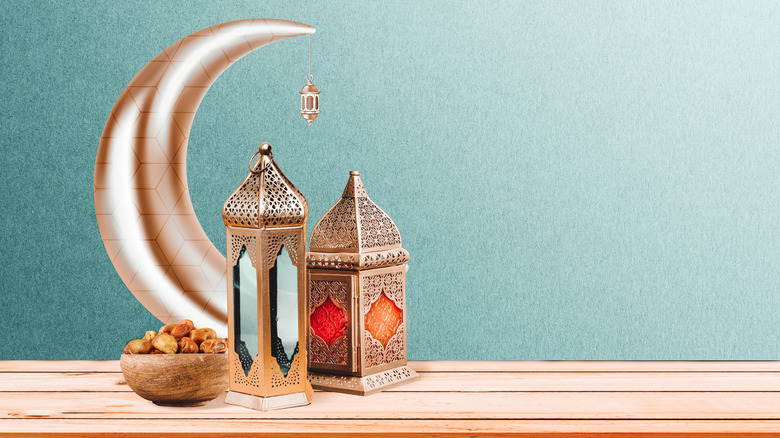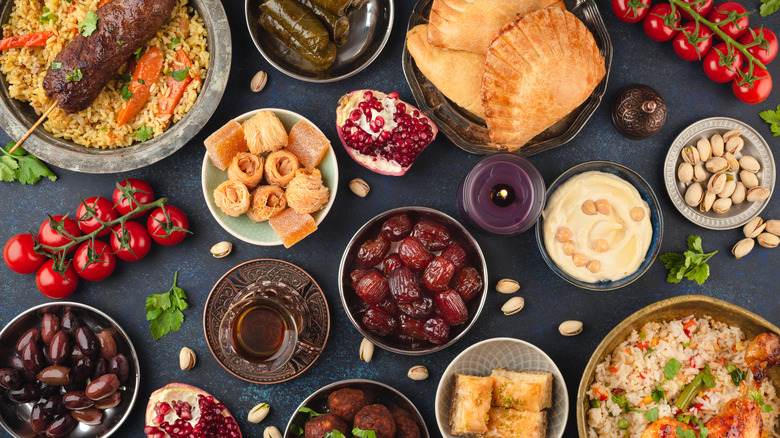Here's How Observers Eat During Ramadan
Each year, the holy month of Ramadan is observed with a month-long period of fasting. According to Eat Right, Ramadan falls on the ninth month of the lunar Islamic calendar and this period of fasting is one of the five pillars of Islam — a period of gratitude, generosity, charitableness, compassion, thankfulness, and a reminder to acknowledge those that are less fortunate. Ramadan is a time for "spiritual discipline" says Vox, a time for one to reflect on their relationship with God, to realize one's mortality, and understand just how much one depends on God for nourishment.
All Muslims are expected to fast during Ramadan with the exception of children, seniors, travelers, those with physical or mental ailments, and expecting mothers. For 30 days, observers must abstain from all food and drink between sunrise and sunset. This means, not even a sip of water during daylight hours. Smoking, sexual activities, and even medicines must be abstained from, a rule which, if broken, invalidates the day's fast. At the end of each day, the fast is broken with two main meals: Iftar and suhoor.
Two meals are eaten during Ramadan fasting
Ramadan fasts are broken over two meals every day: the meal after sunset that marks the end of a day of fasting is called iftar, and another before sunrise which marks the onset of another day of fasting is called suhoor (per Fine Dining Lovers). While iftar meals are heartier with drinks, mains, and desserts served over several courses, suhoor meals are on the more nutritious side with hydrating, energizing, and fiber-heavy foods like fruits and breads, which can sustain the body for the hours of fasting that follow. Observers may, of course, continue to eat and drink throughout the period between iftar and suhoor (via The Kitchn).
Most often, the fast is broken with dates each evening, after which iftar follows. Vox explains that the fast is often broken with a very light iftar that is more of a breakfast. A larger meal follows later and is often eaten alongside friends and families at each other's homes. Though what constitutes iftar and suhoor varies from country to country and family to family, meals usually include fruit salads, spicy vegetable preparations, meats, kebabs, breads, and fruity desserts. What almost always makes it to all dinner tables, however, is a bottle of Rooh Afza, says The Kitchn. The pink-colored, rose-flavored syrup adds a floral kick to lassis, or even just water with a squeeze of lime — because no meal is complete without refreshing beverages to match.

